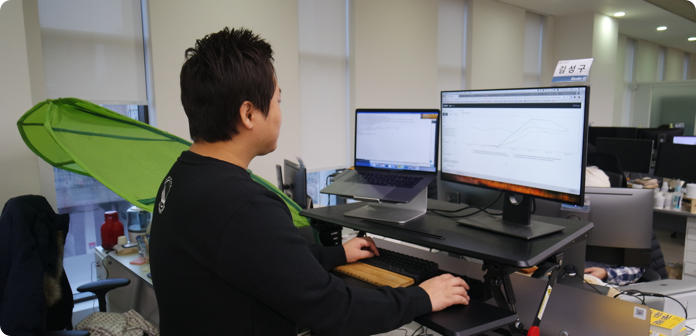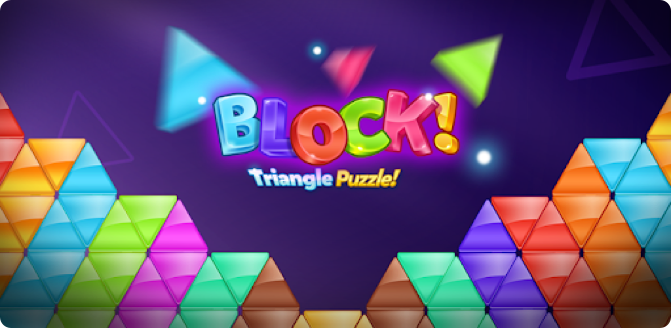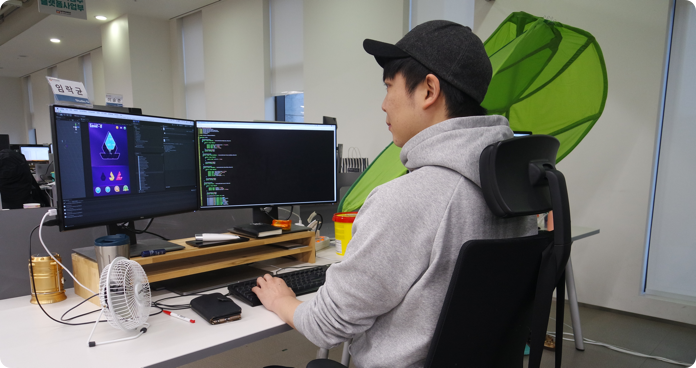· 8 min read
Key Lessons From Studio Q – BitMango Interview

Renato Gallo
Developer Relations Associate at GameAnalytics
After the launch of one of their biggest games, I spoke with Sung-Ku Kim, Director of Studio Q at BitMango, to understand more about the history of the company, and key lessons the studio learned on their path to success.
Before we dig into the details, are you able to give us some background into how BitMango started?
BitMango has had an interesting journey actually. We originally started out as a subsidiary of a company called Datawave, which was mainly focused on keyword search ads. The CEO of Datawave, Kisup Lee, was inspired by the gaming industry, and so looked to invest in it.
And that’s where BitMango came in. To enter such a competitive market, we really had to maximize our data analysis capabilities and use key metrics to monitor the performance of our games – which was our biggest strength. As a result, BitMango not only succeeded as a studio, but is now an even larger company than Datawave.
In total, we now have four new game development teams under the BitMango umbrella. All of which work in the same office, actively sharing information and resources among the different studios. Even though I mainly lead the Studio Q team, it’s nice to be part of such a big family!
So BitMango has 4 studios under its belt. Can you give us a bit more detail about these studios?
Of course. So as mentioned, there are 4 studios in total under the BitMango umbrella, and each studio employs between 10 and 30 people. We have an interesting system here where all of our employees are in kind of a horizontal relationship, meaning there is no rank and position. We prefer this set up to the norm, and it’s working pretty well within the team!

Although all of the studios have freedom to make new and exciting games, each team is responsible for maintaining their own portfolio. And as for the bigger and more popular titles, like Roll The Ball and Word Cookies, everyone pitches in and prioritises these over fresh new projects.
Studio Q, the team I lead, is the fourth new game development studio of BitMango, and was separated from an existing studio as it grew larger. In total, Studio Q has 10 members which consists of one director (myself), four game designers, three programmers, and two artists.
Can you tell us a bit more about Studio Q, and how they manage their projects?
So, we have 3 core values at Studio Q, which are Quantity, Quality, and Quick. Based on these values, the studio aims to create games that almost everyone can enjoy. Whatever game or project we work on, we make sure to follow these key principles.
On a single project, I would say we have around 3 to 5 people, with a development time of 2 to 12 weeks (depending on how big the task). We also take care of the soft-launch and marketing ourselves.
I would say that we’re pretty flexible in the development of our games, as long as it sits within the Puzzle genre. Each project member has the freedom to choose and develop their project however they like – with a focus on analyzing what’s going on in the market.
Looks like you guys are a busy bunch! What were the first games that Studio Q worked on? And what did you learn from these?
The first truly successful game from Studio Q was Jewel Pop Treasure Island, which is a game from the Same Match genre (such as Toon Blast). It took around 12 weeks of development time, with a team of 4 people. I would say that this was one of the biggest projects for the team.
However, despite having a good average play time and retention rate, we unfortunately fell short in profits for this title. In the end, we sadly had to consider the game a failure from our ROI perspective, despite how good the game was.
It wasn’t all sad however, as this was an important lesson for us. We learnt that even with high retention, it’s difficult to be successful if your ads response rate isn’t high enough, and the profit model doesn’t suit the game.
Another issue we actually stumbled across was that we tried to squeeze in too many features into the game. This made it difficult for the users to understand simple mechanics, and we eventually lost valuable players because of this. We now know that it’s important to get rid of unnecessary elements that hinder the game’s core value, rather than overload it with more features. Lesson here – less is more.
Sounds like you have a ton of experience! Are you able to tell us a bit more about your successful hits?
Well, after quite a few failures, we finally settled on a genre that we felt confident in. And so came our next project, Block! Triangle Puzzle Tangram.
Block! Triangle Puzzle Tangram is a pretty simple game, in which players choose suitable blocks and fill out their board. We’d learned so much from our other successful titles, like Block! and Block! Hexa Puzzle (Installs around 60M+), that we were definitely expecting some success with this new title.

Overall, this game has a pretty short playtime, which is a perfect match for the advertising models. We also made sure to remove any unnecessary elements, and instead focused on the core value of the game. In total, this game took 2 weeks and 2 people to develop.
You would think 2 weeks of development is quite a challenge, but because we focused on its core, we managed to finish making the game within the planned time. After the release, the game hit more than 1.2M downloads within the first month! It’s been around 3 months since then, and it’s achieving more than 4M downloads for both Android and IOS combined.
So after making so many different games, and finally releasing some great hits, how would you describe your overall strategy?
When it comes to creating games, we always think about the players. And our ultimate goal is to create awesome games that anyone can enjoy, for free.
We find puzzle games, at their core, to be extremely entertaining. Our strategy now is to develop prototypes as quickly as possible, enter soft launch stage, and then make decisions based on player’s feedback. We try to find that game that has playability, as well as meeting the users demands.
During soft launch, what key metrics do you monitor? How do you know if a game is successful or not?
I would say that retention is probably one of the most important metrics that we track, especially during soft launch.
We normally have a two-week soft-launching period for most of our games. During those two weeks, Studio Q will update the app based on data that we collect from launch, and use this tweak the game, ultimately improving the games retention.
After these two weeks, the game will only get released globally if the retention is higher than our criteria. If not, we’ll drop this title and move on to the next project.
What would you say is in the future for Studio Q? What’s the next big focus for you?
One of our biggest core values is learning from our failures.
With this always in the back of our minds, we’re all about experimenting with lots of new things. We try something new, fail, learn, and ultimately grow. And my goal in all of this is to create a studio that can reduce the failures, build on the successes, and grow an already established company.

In regards to the near future, I would say that we’re still focused on the mobile puzzle game market. There are still so many different types of puzzle games that we haven’t tried, and I think it’ll be a lot of fun to continue to expand within this area.
Thanks for taking the time to talk to us! Lastly, what advice would you give to new developers when creating a puzzle game for the first time?
Tip 1: Don’t forget about your players.
We experienced a lot of trial and error because we’ve overlooked our players in the early stages of development. It’s important to always remember that users will turn their back on your game if it doesn’t properly meet their needs. If the game is bad, they won’t care, regardless of how many hours you spent on making it.
We make sure to listen to our users through retention, session length, reviews, custom logs and level data. With all of this data compiled together, we’ll then make relevant updates to keep our players happy.
Tip 2: Work smarter, not harder.
By using data to understand your players and improve your game, you won’t need to have a huge team and months of development time.
During the early stage of development, we’ll only put in the bare minimum in terms of mechanics that we want to deliver to our players. This gives us plenty of room to gradually make updates to the game that our users actually wants to see. It’s kind of a win-win situation – we’re able to quickly get games on the market, and our players stay happy.